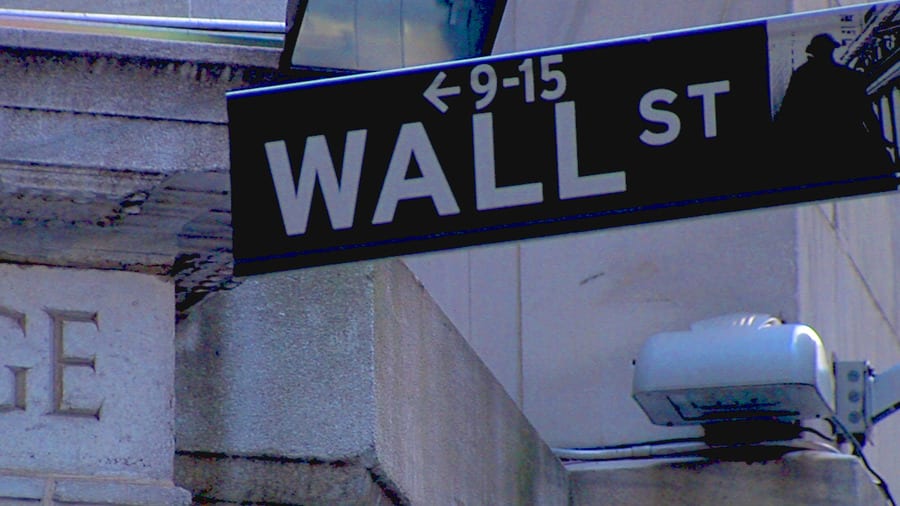
Five things you need to know before the market opens on Wednesday February 1:
1. -- Stock Futures Lower As 2023 Rally Faces Early Fed Test
U.S. equity futures moved lower Wednesday, while the dollar retreated modestly against its global peers, as investors looked to enter the first trading session of the month on a cautious note, with jobs data and a crucial Fed policy decision set for later in the session.
The early Tuesday caution, however, comes shortly on the heels of the best January performance for stocks in four years, with the S&P 500 rising 6.2% on the month. The tech-focused Nasdaq, lifted by big gains for mega cap stocks such as Amazon (AMZN). Google (GOOGL) and Meta Platforms (META), as well as a pullback in Treasury bond yields, rose by 10.7% for its best start to the year in more than two decades.
Wednesday's Federal Reserve rate decision, however, could either provide a further tailwind to the market's surprising rally -- which has lifted the S&P 500 nearly 14% from its mid-October lows -- with a dovish message from Chairman Jerome Powell, or stop it in its tracks with any hawkish signaling on rates, inflation or wage growth.
Inflation data from Europe today could, at least indirectly, provide some fuel for those seeking a dovish pivot from the Fed Chair, with the region's consumer price index slowing for a third consecutive month to 8.5% in January, well shy of the 9% forecast and the 9.2% rate recorded over the final month of last year.
In the U.S., core consumer prices were running at an annualized rate of 3.1% over the three months ending in December, compared to their 7.2% peak over the second quarter of last year.
"Chair Powell has said that the Committee would not consider cutting rates until they are confidence that inflation is moving down to 2% in a sustained way," said Jeffrey Roach, chief economist for LPL Financial in Charlotte, North Carolina. "The markets expect the Fed to cut rates as early as July. Who is right?"
Benchmark 10-year Treasury note yields are marked modestly lower, at 3.474%, heading into the start of the New York trading session, while 2-year notes were pegged at 4.191%. The U.S. dollar index, which tracks the greenback against a baskets of its global peers, was marked 0.16% lower at 101.918 following its fourth consecutive monthly decline.
Heading into the start of the trading day on Wall Street, futures tied to the S&P 500 are priced for a 16 point opening bell decline while those linked to the Dow Jones Industrial Average are set for a 135 point pullback. The tech-focused Nasdaq was marked 42 points lower.
In overseas markets, Europe's Stoxx 600 gained 0.24% in early Frankfurt trading, following the softer-than-expected inflation figures and modestly improving manufacturing PMI data, while Asia's region-wide MSCI ex-Japan index gained 1.09% and Japan's Nikkei 225 gained 0.07%
2. -- Traders Bet On Smaller Rate Hikes, See Dovish Pivot
The Federal Reserve looks set to deliver the eighth interest rate hike of the most aggressive tightening cycle in a generation Tuesday, while perhaps hinting quietly at a near-term pause as it tracks cooling inflation data and a softening economy heading into the spring.
This month's rate decision, expected at 2:00 pm Eastern time in Washington, is likely to be the smallest in nearly a year, however, as traders have effectively locked-in the chances of a 25 basis point increase that would lift the Fed Funds rate to a range of between 4.5% and 4.75%.
That shift alone, from outsized rate hikes to a more normal tightening course, could be the first of several indications that the Fed is willing to back away from its guidance that rates will rise past 5%, and remain there until the end of this year, in order to bring inflation back to the central bank's 2% target.
The CME Group's FedWatch suggests an 82.1% chance of another 25 basis point increase in March, but the balance of bets for the Fed's May meeting suggest rates holding at between 4.75% and 5% into the summer and beyond, with a small rate cut priced-in for the Fed's November meeting.
"Chair Powell will acknowledge that the inflation data since the December meeting have been favorable, while most indicators of both the current and future pace of growth have softened," said Ian Shepherdson of Pantheon Macroeconomics. "But a wholesale retreat from the Fed’s hawkishness is unlikely; that will have to wait till the March meeting.
3. -- Meta Earnings On Deck As Mega Cap Tech Rolls Up Sleeves
Meta Platforms (META) shares edged lower in pre-market trading ahead of the social media and metaverse group's highly-anticipated fourth quarter earnings after the closing bell.
Meta, which owns the Facebook, Instagram and WhatsApp 'family of apps', is expected to post a bottom line of $2.22 per share, down 39.5% from last year, on revenues of $31.53 billion.
Investors are likely to be more focused on the group's near-term outlook for ad sales, however, which comprise around 98% of group revenues and have been slowing markedly since the middle of last year amid broader economic uncertainty and a pullback in marketing spend.
Meta will also detail what are expected to be heavy losses in its Reality Labs division, which houses its metaverse project, after the unit bled some $9.4 billion in red ink over the first nine months of last year, a tally CEO Mark Zuckerberg said would grow "significantly" into 2023.
Cost cuts, however, alongside the group's decision to slash around 11,000 from its global workforce, could boost profits in its many 'Family of Apps' division, even with the slow ad spend, with a weaker U.S. dollar providing a further 2023 tailwind.
Apple (AAPL), Amazon and Google parent Alphabet will all publish their December quarter earnings after the close of trading Thursday.
Meta shares were marked 1.22% lower in pre-market trading to indicate a Wednesday opening bell price of $147.15 each.
4. -- AMD Shares Leap As Earnings, Outlook Steady Chip Sector Nerves
Advanced Micro Devices (AMD) shares were firmly higher in pre-market trading following the chipmaker's better-than-expected fourth quarter earnings and optimistic sector outlook.
MD said it sees first quarter revenue in the region of $5.3 billion, plus or minus $300 million, with declining sales from its gaming and client segment offset by growth in data center and embedded.
For the three months ending in December, AMD said non-GAAP earnings fell 27.2% from last year to match Street forecasts at 67 cents per share, with overall revenues rising 30% to $5.6 billion.
"2022 was a strong year for AMD despite the weak PC market," CEO Lisa Su told investors on a conference call late Tuesday. "As we enter 2023, we expect the overall demand environment to remain mixed with the second half stronger than the first half."
AMD shares were marked 3.05% higher in pre-market trading to indicate an opening bell price of $77.40 each.
5. -- Peloton Facing More Losses, Cost Cuts Amid Fading In-Home Demand
Peloton Interactive (PTON) shares moved lower in pre-market trading ahead of the fitness equipment maker's second quarter earnings prior to the opening bell.
The troubled group has faced both a slump in demand, linked in part to the return to office work in the post-pandemic era and the corresponding rise in gym memberships, and supply chain disruptions while weathering attempts to lower its cost base and return to profitability.
Analysts still see it posting a fourth quarter loss of 65 cents per share, however, with revenues falling 37% from last year to just $710 billion.
Peloton, which began selling its signature bikes and treadmills on Amazon (AMZN) last year in order to boost sales, also remains the dominant player in the connected fitness market, with an overall share of around 67% over the final three months of last year.
Peloton shares were marked 3.33% lower in pre-market trading to indicate an opening bell price of $12.50 each.







